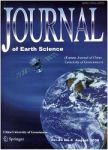Molecular properties of dissolved organic matter across Earth systems: A meta-analysis
作者机构:Key Laboratory of Lake and Watershed Science for Water Security, Nanjing Institute of Geography and Limnology, Chinese Academy of Sciences School of Geography and Ocean Science, Nanjing University
出 版 物:《Journal of Earth Science》 (地球科学学刊)
年 卷 期:2024年
核心收录:
学科分类:083002[工学-环境工程] 0830[工学-环境科学与工程(可授工学、理学、农学学位)] 07[理学] 08[工学] 09[农学] 0903[农学-农业资源与环境] 0713[理学-生态学]
基 金:National Natural Science Foundation of China (42225708, 92251304, 42377122) Science and Technology Planning Project of NIGLAS (NIGLAS2022GS09)
摘 要:Dissolved organic matter (DOM) represents the largest pool of reactive carbon on the Earth and plays a crucial role in various biogeochemical processes and ecosystem functions. However, it is understudied for a global understanding of DOM molecular properties such as molecular weight, stoichiometry, and oxidation state, and the linkages among them across Earth systems. Here, a meta-analysis of 2,707 sites in 204 literatures was conducted by synthesizing four representative molecular properties of DOM, i.e., mass, double bond equivalent (DBE), modified aromaticity index (AImod), and nominal oxidation state of carbon (NOSC). By exploring H/C and O/C ratios, we examined the relationships among these DOM properties across waters and land systems, and their geographical patterns and environmental drivers. We found that, compared to land system, the mass, DBE, and AImodwere all significantly higher in water systems, with river sediments exhibiting the highest values. DOM oxidation state indicated by NOSC was greater on average in wastewater (NOSC = 0.226 ± 0.06) and marine water (NOSC = 0.133 ± 0.06) than in other habitats. Compared to waters, the mass in land system showed more strongly positive correlations with oxidation states such as NOSC and O/C, and the NOSC showed stronger relations to bioavailability properties such as DBE, AImod, and H/C. Among all the properties, H/C and AImodcontributed to the most variations in global DOM properties. In waters, NOSC monotonically increased towards high latitudes, while DBE and AImodshowed significant hump-shaped patterns indicating peaked unsaturation and aromaticity at mid-latitudes of approximately absolute 30°-50°. The variations in DOM properties were significantly correlated with environmental factors such as annual mean temperature and pH. Collectively, we revealed the spatial distribution and environmental drivers of DOM molecular properties across Earth ecosystems, which could shed light on our comprehensive understan



